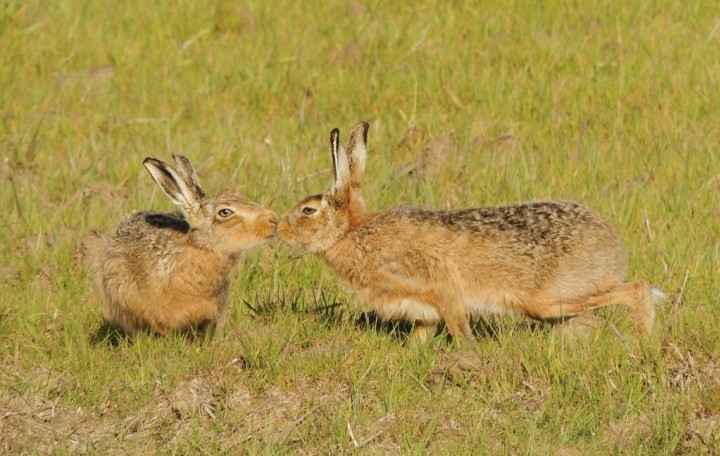Will the real Easter Bunny please stand up?
Although brown hares are familiar countryside creatures to country-folk they have not always graced our countryside for it seems likely that they were introduced into this country by the Romans from the steppe lands of eastern Europe so that they could indulge in hare coursing. However, it was for other reasons that it became popular after the Romans departed from our shores.
In ancient times the brown hare was associated with new life and a symbol of procreation. It was the companion of Aphrodite, the Greek goddess of love and in Greece it was not unusual to find wedding rings bearing the hares image. The hare was also an important creature in Britain for after the Romans had departed and before the coming of Christianity, it was the sacred animal of Eostre, the Anglo-Saxon goddess of fertility and new life. The month of April was called eostur-monath, the 'dawn month', the time when the sun warmed the fields and new life and new growth were created.
Although Christianity eventually became established in Britain, paganism still remained a popular religion and it was subsequently found that the Christian festival that surrounded the death of Christ was similar to the Anglo-Saxon festival of Eostre in that it too included rites symbolic of death and resurrection. Because the two festivals had similarity in their meanings and perhaps in an attempt by the Christians to win over the remaining pagans, the name Eostre was retained and so her name survives in the Christian festival that we know as Easter.
English folk-lore tells us that in the past many games were played at Easter time. One of the games by children was to search for the eggs laid by the Easter hare for it was thought that it was the hare, and not the plovers with which it closely associated with, that laid the eggs in the fields. Plovers, and especially lapwings, lay their eggs in a scrap on the ground which resembles the 'form' in which the hare lies and in which it gives birth to its young, for unlike rabbits hares do not burrow but live above ground. Even today the form of the hare is still referred to as a nest, which is a further example of a past association with birds. Today children no longer search the fields for the hare`s eggs and the eggs are made of chocolate.



















